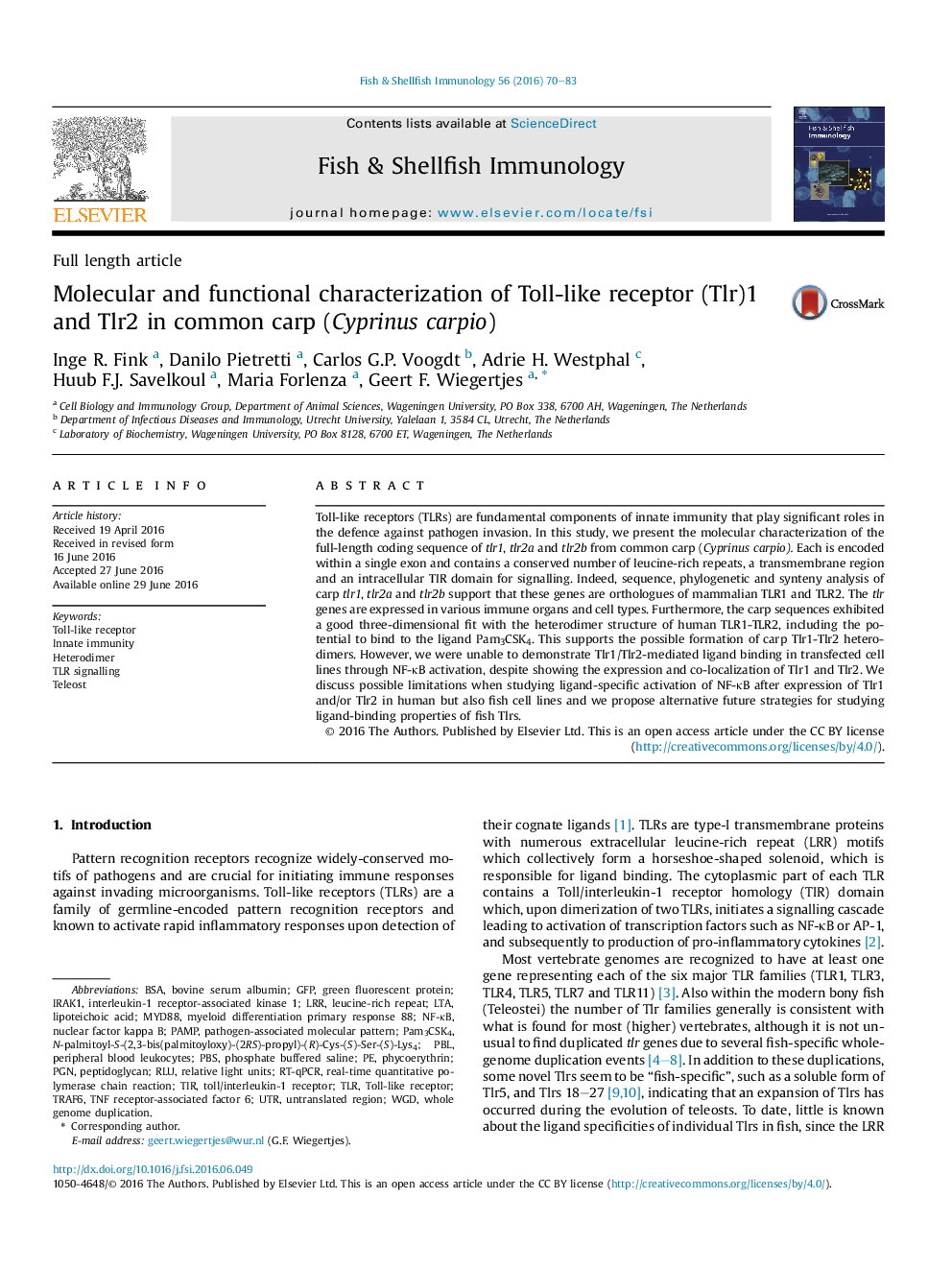| Article ID | Journal | Published Year | Pages | File Type |
|---|---|---|---|---|
| 8499013 | Fish & Shellfish Immunology | 2016 | 14 Pages |
Abstract
Toll-like receptors (TLRs) are fundamental components of innate immunity that play significant roles in the defence against pathogen invasion. In this study, we present the molecular characterization of the full-length coding sequence of tlr1, tlr2a and tlr2b from common carp (Cyprinus carpio). Each is encoded within a single exon and contains a conserved number of leucine-rich repeats, a transmembrane region and an intracellular TIR domain for signalling. Indeed, sequence, phylogenetic and synteny analysis of carp tlr1, tlr2a and tlr2b support that these genes are orthologues of mammalian TLR1 and TLR2. The tlr genes are expressed in various immune organs and cell types. Furthermore, the carp sequences exhibited a good three-dimensional fit with the heterodimer structure of human TLR1-TLR2, including the potential to bind to the ligand Pam3CSK4. This supports the possible formation of carp Tlr1-Tlr2 heterodimers. However, we were unable to demonstrate Tlr1/Tlr2-mediated ligand binding in transfected cell lines through NF-κB activation, despite showing the expression and co-localization of Tlr1 and Tlr2. We discuss possible limitations when studying ligand-specific activation of NF-κB after expression of Tlr1 and/or Tlr2 in human but also fish cell lines and we propose alternative future strategies for studying ligand-binding properties of fish Tlrs.
Keywords
PGNPam3CSK4RLUTRAF6IRAK1LTATLRPAMPLRRPBLWGDRT-qPCRHeterodimerTLR signallingGFPMYD88PBSNF-κBBSAbovine serum albuminlipoteichoic acidpathogen-associated molecular patternmyeloid differentiation primary response 88Innate immunitywhole genome duplicationleucine-rich repeatTIRToll-like receptorTNF receptor-associated factor 6nuclear factor kappa BphycoerythrinPhosphate buffered salineperipheral blood leukocytesTeleostUTR یا untranslated regions untranslated regionrelative light unitsreal-time quantitative polymerase chain reactiongreen fluorescent proteinPeptidoglycaninterleukin-1 receptor-associated kinase 1Toll/interleukin-1 receptor
Related Topics
Life Sciences
Agricultural and Biological Sciences
Aquatic Science
Authors
Inge R. Fink, Danilo Pietretti, Carlos G.P. Voogdt, Adrie H. Westphal, Huub F.J. Savelkoul, Maria Forlenza, Geert F. Wiegertjes,
